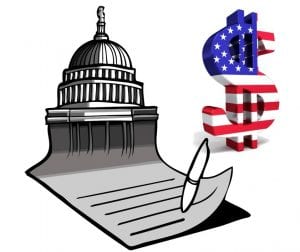Insights < BACK TO ALL INSIGHTS
Closing the Loop: The Proposal of New Subcontracting Limitations on Small Businesses
Closing the Loop: The Proposal of New Subcontracting Limitations on Small Businesses
By: Nicole Kardell

Many small business government contractors may have to rethink the way they do business. The Small Business Administration issued a proposed rule at the end of December to implement provisions of the National Defense Authorization Act of 2013. The NDAA, which was signed into law in January 2013, requires several significant modifications to the rules for small business concerns, including changes to the Limitations on Subcontracting Rule (13 C.F.R. 125.6).
The proposed rule suggests a number of changes that would impact small businesses qualifying under one or more of the size or socioeconomic categories for set-aside contracts. These changes would (1) require companies to change how they determine compliance under §125.6, (2) require them to certify compliance in the bidding process, and (3) impose steep monetary penalties for delinquencies.
The Limitations on Subcontracting rule limits the extent to which prime contractors may subcontract obligations to outside entities, say to large companies that would not themselves qualify for a government set-aside. Under the current rule, a cost-based metric controls what prime contractors on set-aside contracts can subcontract to other entities: the prime must incur a certain percentage of the contract costs. For instance, for services contracts, a prime contractor must “perform at least 50 percent of the cost of the contract incurred for personnel with its own employees.” Section 125.6 currently provides different cost-base ratios based upon the type of contract (e.g., services, supplies, construction) and the type of set-aside (e.g., 8(a), SDVOB, HUBZone).
The proposed rule, if implemented, would alter how limitations are calculated, using an income-based, as opposed to a cost-based, metric. Under the proposed rule, prime contractors on set-aside contracts would be required to keep in-house a certain percentage of income—including passive income—paid by the government. For services and supply contracts, no more than fifty percent of the amount paid under the contract could be passed on to subcontractors; for construction no more than eighty-five percent; and for specialty trade, no more than seventy-five percent. (note that these are the same ratios used under the current cost-based metric, but now apply to the income-based metric). There no longer would be a distinction in ratios based upon type of set-aside, however.
An important exception to the rule would exist for “similarly situated entities.” Maintaining the philosophy behind the set-aside program, the proposed rule would allow prime contractors to contract out to companies who also qualify under their set-aside category without that relationship counting towards the income limit. In other words, the entities would be treated the same for purposes of the Limitations on Subcontracting rule. For instance, an SDVOB could subcontract out a services contract to another SDVOB and that contract relationship would not count towards the fifty percent income limit. However, the subcontractor must qualify under the same set-aside category as the prime in order to take advantage of this exception.
Another exception is that the rule would not apply to contracts valued under $150,000.
Closing a former loophole, the revised §125.6 would count all levels of subcontractor relationship, not just to the first prime-sub relationship. So companies could not get around the subcontract limitation through subcontracting out under the subcontractor.
In order to satisfy the new Limitations on Subcontracting rule, companies would need to address the rule in their contract bids for set-aside contracts. They would be required to certify that they can satisfy the rule. They would further be required to identify any similarly situated entities they planned to subcontract with and to what extent (percentage) they planned to subcontract with them. Any post-award changes would need to be presented to the contracting officer.
Unlike in the past, the proposed rule would institute steep penalties for non-compliance with the Limitations on Subcontracting rule. Companies found violating the rule would be subject to fines “the greater of either $500,000 or the dollar amount spent in excess of the permitted levels for subcontracting.”
The SBA’s proposed changes may seem staggering to small businesses that have carefully defined their business relationships to remain compliant under the current cost-based regime. But the changes could ultimately help to ensure the viability of the SBA’s set-aside programs. When small and disadvantaged prime contractors subcontract the bulk of their work to large businesses, they call into question the purpose of the set-aside structure. Those interested in presenting comments on this proposed change may submit their comments through regulations.gov by February 27, 2015.





